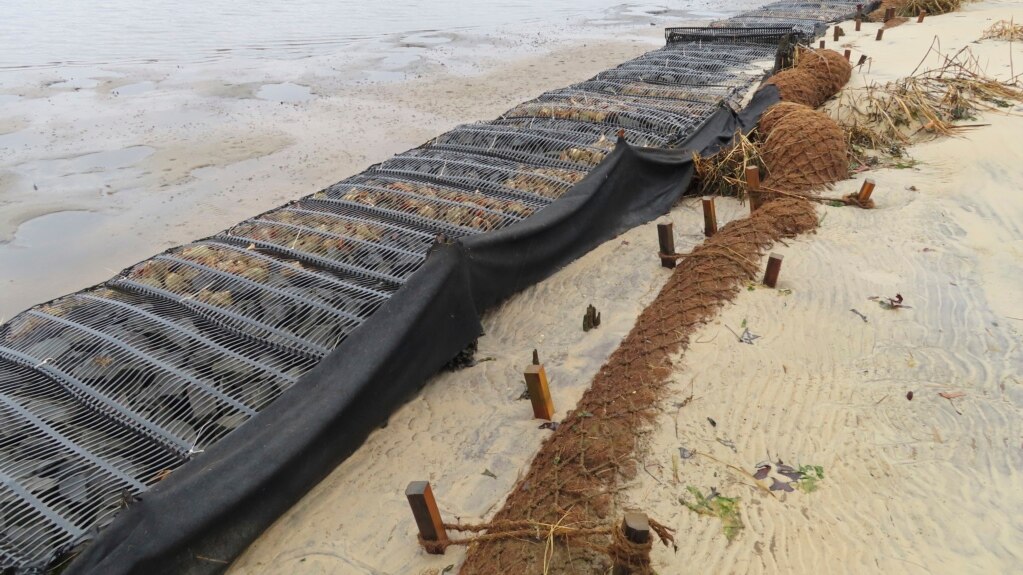Coastal communities around the world are using material from coconuts to reduce beach erosion.
Long pieces from the outer shell of the coconut, known as coir, are often used with other materials to build barriers. The barriers are used to protect beaches from getting washed away by the force of waves. The coconut material is widely available and costs a lot less than barriers made of other materials, such as wood, steel or concrete.
Coir material is processed and put together to form larger pieces. It is often held together with netting. In developing areas, old fishing nets can also be used.
Some projects create “living shorelines” made from natural elements rather than hard materials. One is being built along part of an eroded riverbank in Neptune, New Jersey. The $1.3 million project is being financed by a mix of federal and local money by the American Littoral Society, a coastal environmental group.
The effort has already greatly improved areas that suffered major erosion damage during Superstorm Sandy in 2012. “We're always trying to reduce wave energy while shielding the shoreline,” said Tim Dillingham, the group's director. “And whenever we can, we like to employ nature-based solutions.”
The coconut-based material is designed to biodegrade, or break down, over time. But before it does, it is sometimes pre-seeded with shoreline plants and grasses. Those plants can also be placed in holes that can be punched into the coir material.
One project is happening in Boston. That is where Julia Hopkins, an assistant professor at Northeastern University, is using coir, wood chips and other material to create floating barriers to slow the force of waves.
A test project has four coconut-based barriers in waterways around Boston. Hopkins imagines a network of hundreds or even thousands of mats linked together to protect wider areas.
Hopkins is pleased with the results she has seen so far. She said the coconut material is not costly and is actually being recycled rather than being thrown away.
Two projects in East Providence, Rhode Island, used coconut material in 2020. The next year, 731 meters of damaged shoreline in New York's Jamaica Bay were treated through a project that also included coconut coir material.
Similar projects have been carried out in the states of Delaware and Texas.
Indonesia is the world's largest coconut producer, with more than 17 million metric tons in 2021. Scientists from the Oceanography Program of Bandung Institute of Technology used coconut material to help build a sea wall in a village in West Java in 2018.
In southern Senegal, people on Diogue Island are using wooden structures and coconut material to reclaim eroded beaches.
The method does not always work, however. In 2016, the Felix Neck Wildlife Refuge in Edgartown, Massachusetts, built barriers around a salt marsh that had eroded in the past. While the effort did help reduce erosion for a while, the material did not last long because of strong waves.
Suzan Bellincampi is the refuge’s director. “The project was really interesting in terms of what we wanted to do and how we adapted it,” she said. “It's not for every site; it has to be site-specific. It works in some places; it doesn't work in all places.”
In a similar way, coconut-based structures were recently used on Chapel Island in Nova Scotia, Canada. But they were damaged by bad weather.
Lac des Battures is a lake on Montreal’s Nuns’ Island in Canada. People there use coconut material to control the growth of invasive plants along the shoreline.
I’m Bryan Lynn.

